What If America Doesn't Actually Need ICBMs or Nuclear Bombers? (Hear Us Out.)
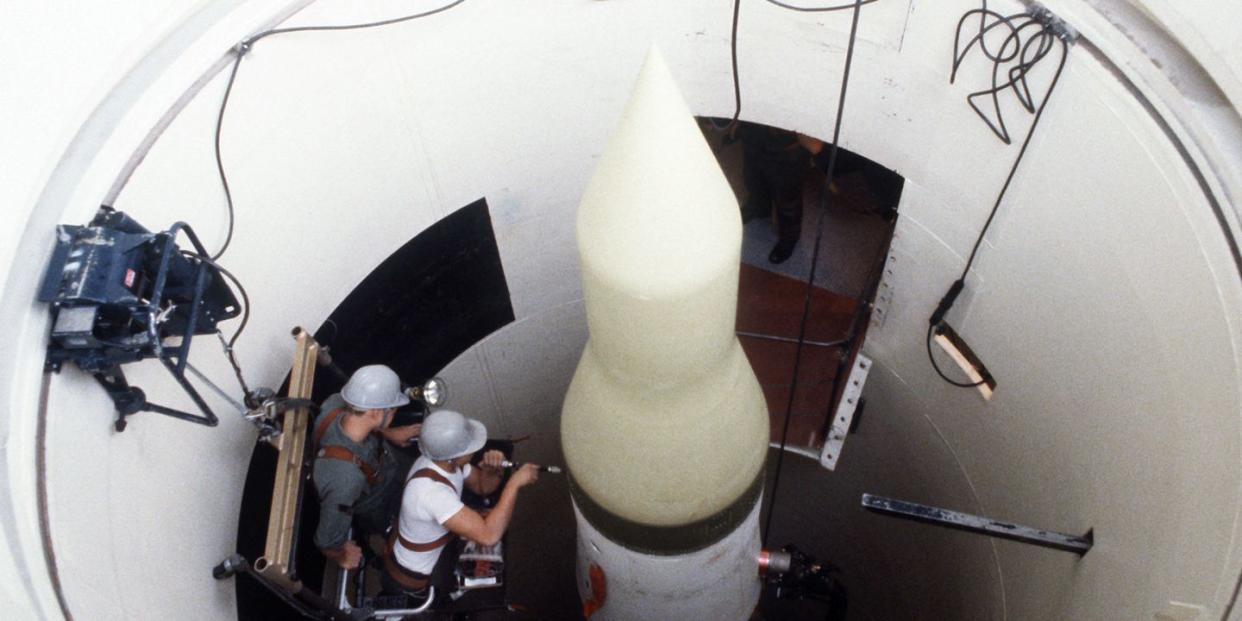
Ever since the 1950, the U.S. military has maintained the policy of "assured destruction:" keeping an arsenal that could launch a counterstrike so devastating it would annihilate any aggressor. The strategy makes everyone involved-especially America’s enemies-squarely confront the unthinkable, making a nuclear war too terrible to contemplate, let alone start.
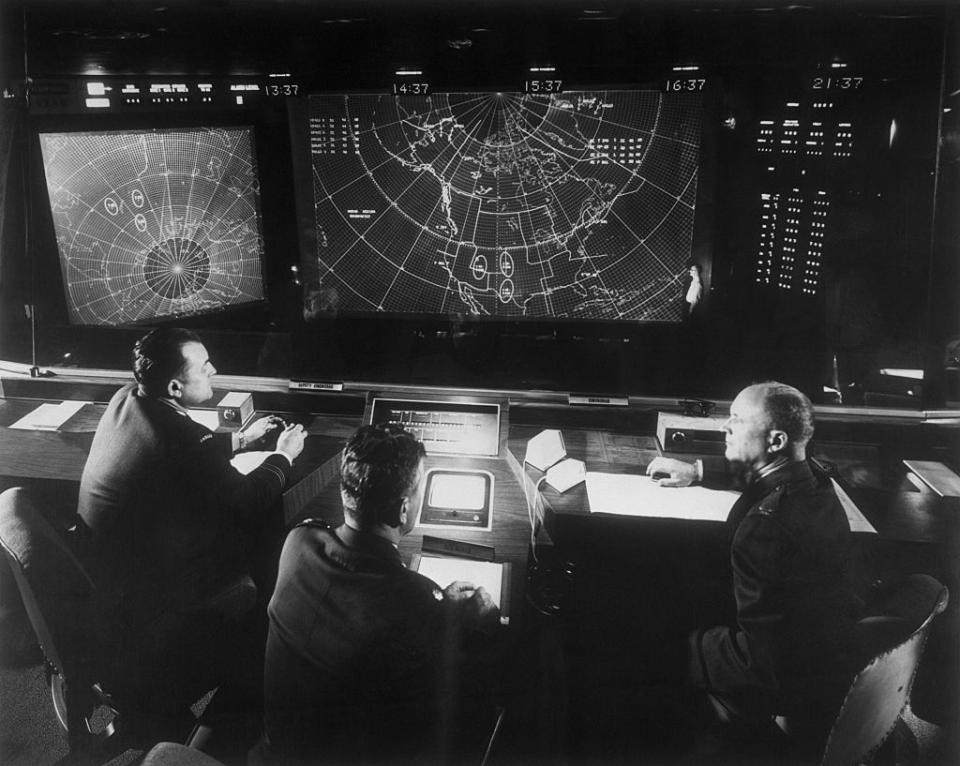
For the strategy to work, America must be able to back it up. For decades, the technological backbone of "assured destruction" has been the so-called “nuclear triad.” Because the U.S. can launch nukes from the air, the land, or the sea, it would be practically impossible for another country to knock out America's offensive capabilities and prevent the counter-strike.
The U.S. is currently working on replacing all three legs of the triad: bombers, intercontinental ballistic missiles, and submarine-launched missiles. It's an overhaul that will cost hundreds of billions of dollars, and no doubt overshoot the Pentagon's price estimates when all is said and done. But before we spend all that money, one must look around and ask the question: Is this still the best way? In the 21st century, does America really need three ways to launch nukes?
Three Is the Magic Number
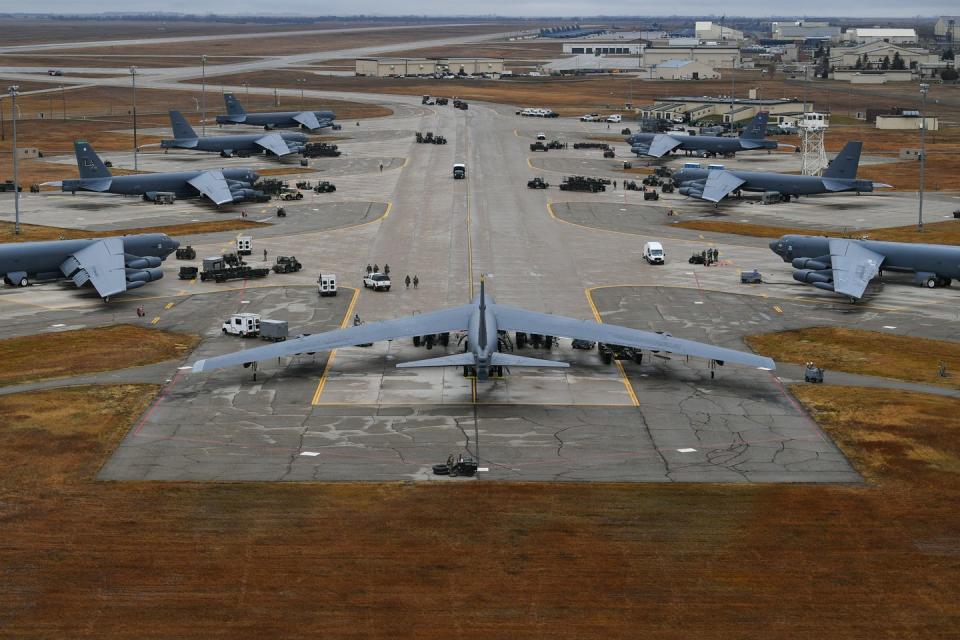
America dropped its very first nuclear weapons by air. Lumbering B-29 bombers carried the heavy, ungainly bombs dropped on Hiroshima and Nagasaki in 1945, and bombers remained the primary delivery system into the 1950s. Soon thereafter, the development of long range missiles, along with the miniaturization of nuclear warheads, made the first intercontinental ballistic missiles possible. In the early 1960s, the adaptation of nuclear reactors resulted in submarines armed with nuclear missiles. And thus a trio of nuclear options came together.
During the Cold War, each arm of the triad justified its existence by doing something better than the other two. Strategic heavy bombers such as today’s B-2 Spirit and the longstanding B-52H Stratofortress could carry many nuclear bombs and strike multiple, geographically distinct targets. Bombers are accurate, with air crews often visually confirming their targets. Bombers could be repurposed to strike emerging targets, such as a missile being readied for launch that an American satellite suddenly revealed. And a plane can be recalled back to the U.S. in the event of a false alarm or cease-fire-something you can't say about a missile.
Bombers did have drawbacks. Aircraft spend most of their time on the ground, scrambled in large numbers only in the event of war. This makes them vulnerable to surprise attack. Bombers also need to physically enter enemy territory, where they could be shot down by fighters and surface-to-air missiles.
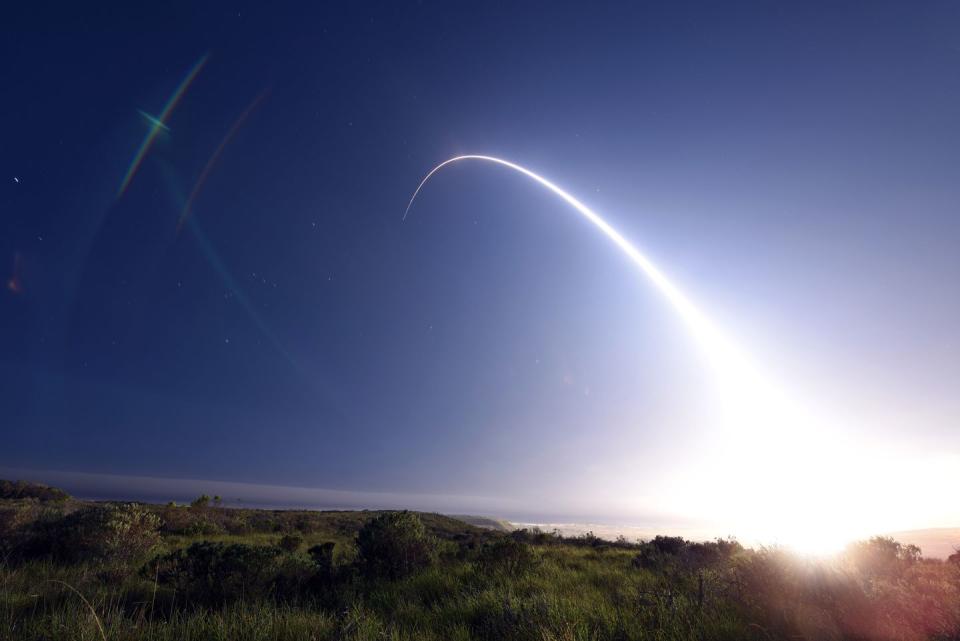
Intercontinental ballistic missiles (ICBMs) loft nuclear warheads into space on ballistic trajectories. They are buried by the hundreds in underground concrete silos scattered across America, ICBMs were accurate, quick to launch, and could hit targets across the planet in a matter of minutes. More than other delivery option, ICBMs could destroy enemy nuclear weapons before the other side could launch or deploy its own nukes.
The third arm of the triad was nuclear powered submarines carrying their own nuclear-tipped ballistic missiles. Nicknamed “boomers,” these boats could slip out of port and vanish for months at a time. The use of nuclear power means a submarine can stay submerged for its entire cruise, making these vessels extremely difficult to detect and destroy. U.S. nuclear submarines are an invulnerable reserve of nuclear weapons that can devastate an enemy’s home country even if an enemy attack somehow disable all of America's bombers and ICBMs.
Nuclear missile submarines had their share of drawbacks. The first submarine-launched ballistic missiles had relatively short ranges, requiring them to sit off an enemy’s coastline to strike. Unlike land-based missiles, which are stationary and have precise ballistic trajectories for targets worked out ahead of time, submarines roam the world’s oceans and, at least before GPS, were less accurate as a result. And because subs must stay submerged and hidden, secure continuous communication with Washington is not possible.
The Bill in the Billions
The pros and cons of each leg of the triangle played off each other during the Cold War. But as the decades rolled on, those capabilities evolved. Bombers, for example, can now use cruise missiles to attack targets at long ranges, eliminating the need for dangerous, white-knuckle penetrations of air defense networks. Thanks to advances in tracking and targeting tech, submarine-launched missiles are now nearly as accurate as ICBMs.
But as the second decade of the 21st century draws to a close, the nuclear triad is showing its age. The B-2 Spirit bomber was introduced in the 1990s, while the B-52H has been flying since the early 1960s and may keep working for decades to come. The Minuteman III ICBM was first deployed in the early 1970s. The U.S. Navy’s Ohio-class ballistic missile submarines date to the 1980s and 1990s.
After decades of pushing back plans to replace all three arms, the U.S. is now faced with a situation where it needs to replace all three at once. The new B-21 Raider bomber, which will replace the B-2 bomber, will cost an estimated $97 billion dollars. The new ICBM, Ground Based Strategic Deterrent (GBSD), will cost around $100 billion. Finally, new ballistic missile submarines will cost $128 billion.
That adds up to a serious bill. The cost is about the equivalent of running the entire U.S. Armed Forces for five months. And the price tag could rise substantially if any of the programs run into expensive technical problems. If history is any guide, then at least one of them will.
The China Example: It (Only) Takes Two
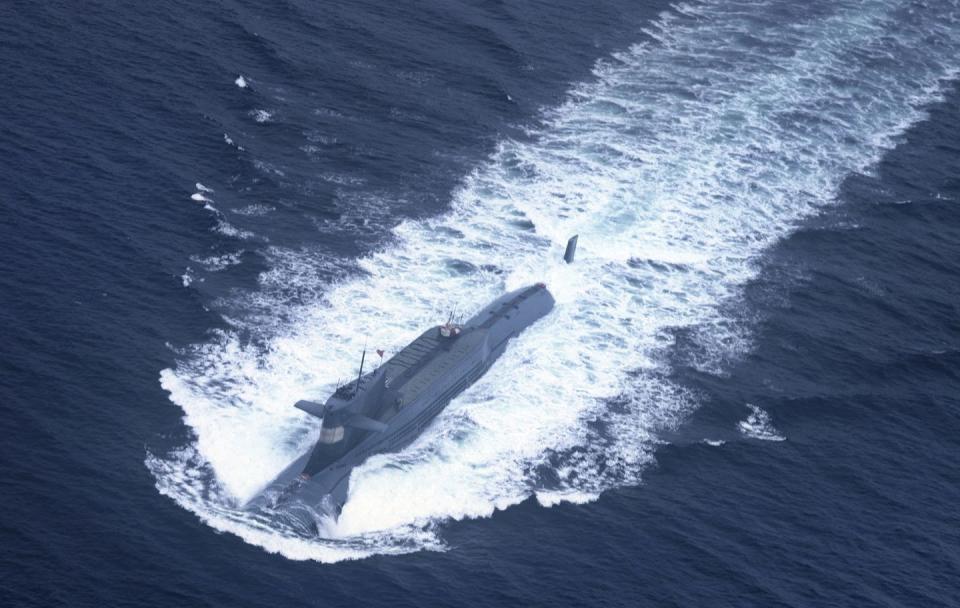
Could the U.S. thrive in 21st century without a nuclear triad? To see a possible way forward, just look at the emerging colossus of China. The world's most populous nation is building more aircraft carriers, more amphibious ships, and more modern combat aircraft than ever before. What China is not doing is significantly expanding its nuclear arsenal.
China has approximately 280 nuclear weapons, a number we can deduce from the amount of fissile material it has produced. That total represents about one-sixth the number of deployed U.S. and Russian nuclear weapons. China’s nukes are spread between land-based ballistic missiles and submarine-launched missiles. It has no air-delivered nuclear weapons for its modest bomber force. In other words, China has a diad.
China is a “no first use” country, meaning it has vowed to never use nuclear weapons first. It also bother with advanced nuclear technologies such as anti-ballistic missile systems or placing multiple warheads on a single missile. Why not? China’s entire nuclear philosophy boils down to this: The country may very well be destroyed by a surprise nuclear attack, but enough Chinese nuclear weapons will survive to make the attack simply not worth it.
Essentially, China’s nuclear doctrine is assured destruction, but stripped of unnecessary complexities. China doesn’t lose any sleep over Russia or America's overwhelming advantage in nuclear arms. As long as China can hit back and nuke at least a handful of American (or Russian) cities, the balance of terror remains.
Does China’s nuclear posture work? Even a strike against tiny North Korea runs the risk of a nuclear counterstrike by China, and the loss of just one American city would be a catastrophe.
Getting Lean
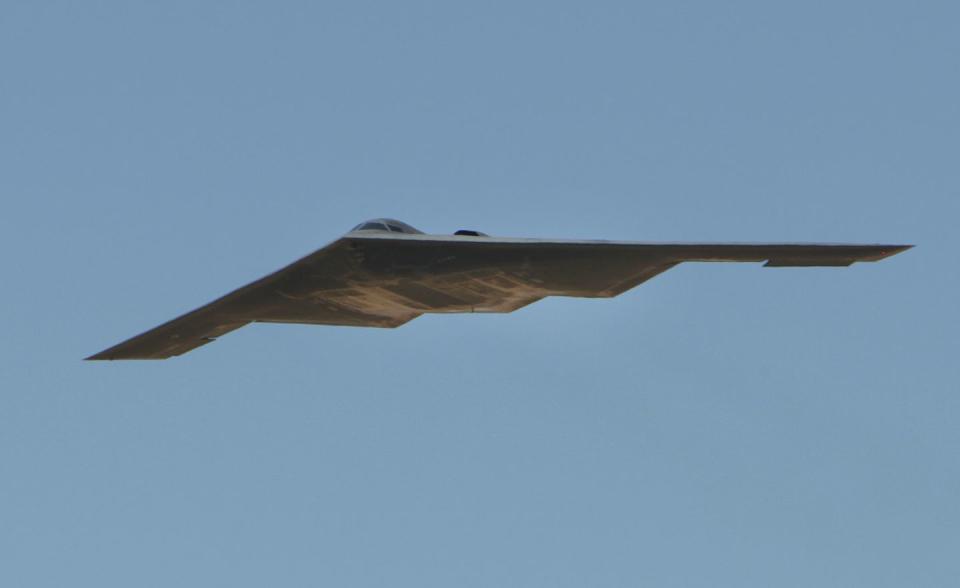
Many nuclear strategists maintain that the United States needs a robust and varied nuclear arsenal built the triad to maintain the credibility of the U.S. nuclear arsenal. But it's hard to ignore the stripped-down logic of the Chinese model, which says the only credibility necessary is the ability to strike back after an attack-the rest is just overthinking the issue.
If that's truly the case, then what use is a triad? Could the U.S. get rid of one or two arms of the triad, spending that money elsewhere in the defense budget to enhance conventional capabilities?
For the sake of argument, let's say the United States dropped one leg of the triad. Most nuclear experts would that the America’s ICBM force is the arm we could most easily do without.
The argument for ICBMs used to be that they had the longest range and were the most accurate, but submarine launched missiles have caught up. Today there are few if any tasks a land-based missile can do that a submarine-based missile cannot. Land-based missiles, sitting in fixed positions in the Earth and vulnerable to attack, also invite a “use it or lose it” mentality-that is, U.S. leaders would be incentivized to launch ICBMs as soon as an enemy attack is detected, just in case the enemy uses its nukes to knock out America's ICBMs. This decision must be made in a matter of minutes and could be based on faulty information, such as a computer glitch indicating enemy missile launches. Today, ICBMs look less relevant than ever.
If the country wanted to go a step further, bombers could also go on the chopping block. Bombers are slow, taking hours to reach their targets, and can be shot down. Still, these planes remain flexible in ways the other nuclear options are not. Bombers can be used in a full range of scenarios, from all-out nuclear war to decimating an enemy tank column with a low-yield nuclear device. Bombers can also be used in a conventional role, carrying more ordnance farther and deeper into enemy territory than other tactical aircraft. One could cut bombers from America’s nuclear arsenal, but removing bombers entirely also takes away a conventional war capability that's not easily made up.
The most survivable arm of the triad is the submarine-launched missile. Paired with a long range missile, missile submarines are largely invulnerable from attack. Submarines are so secure that the United Kingdom’s entire nuclear arsenal has shifted to nuclear submarines, and France is heavily dependent on her Triomphant-class nuclear submarines to provide the country’s nuclear deterrent.
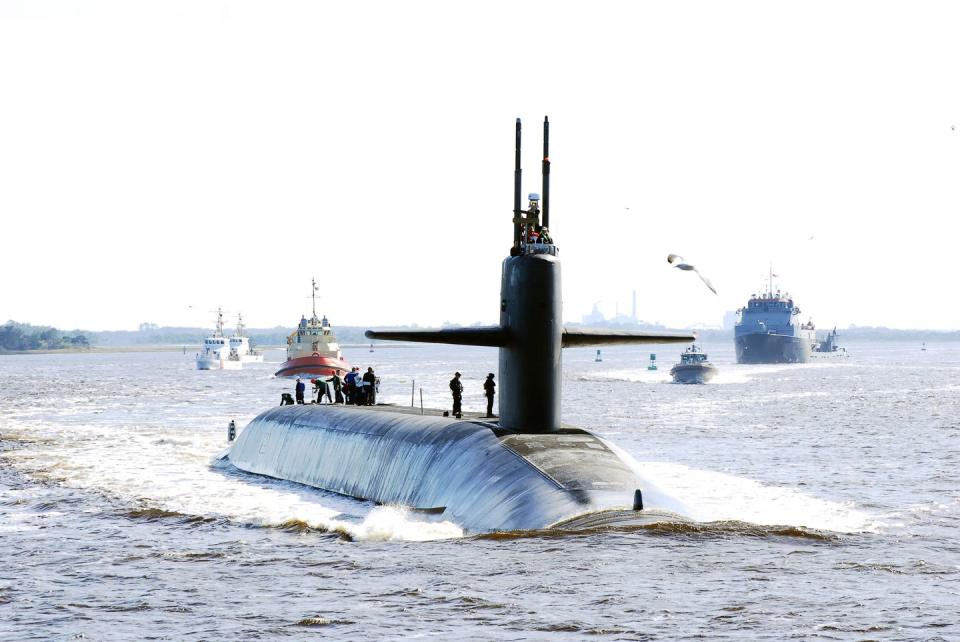
The 21st Century Monad
Suppose the U.S. follows the British example, shifting to an entirely submarine-based nuclear force. What changes?
For starters, the Pentagon now has approximately $197 billion it can shift to other programs. Reinvesting that into America’s conventional forces, the Navy could afford its goal of a 355-ship fleet, while the Air Force could pursue a long-range conventional strike plane as a replacement for the lost capabilities of the B-21 bomber.
In terms of nuclear strategy, it’s hard to argue a submarine-only force makes us less secure. Adversaries are still deterred from surprise nuclear attacks. Assured destruction holds. The U.S. could field the same number of warheads it does today by adding a few more vessels to the nuclear submarine force and fitting their missiles with multiple warheads, while a buildup of conventional forces-made possible by canceling the new bomber and ICBM-dissuades potential foes from a conventional war that could spiral into a nuclear one.
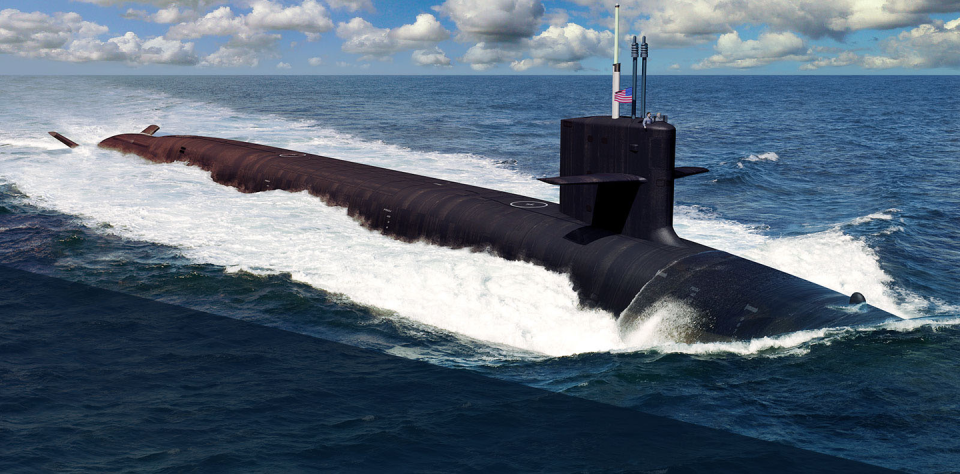
Could the U.S. cut ICBMs and rely on a force of submarines and bombers, or submarines alone? These are important questions the American people need to ask before spending $300 billion replicating the weapons of the Cold War. Perhaps the U.S. should stick with the nuclear triad-but at the very least, America needs a national conversation about what nuclear security means and how to achieve it.
('You Might Also Like',)

